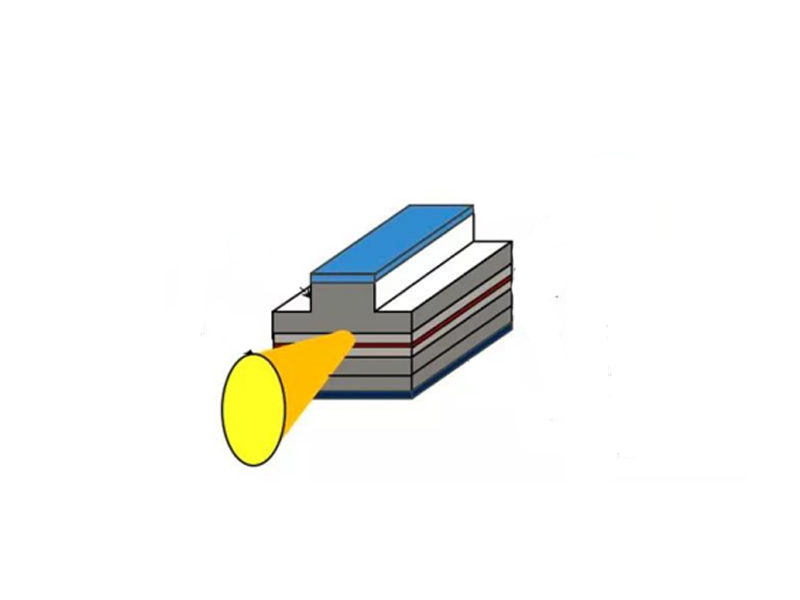Semiconductor lasers offer significant advantages, such as compact size and high electro-optical conversion efficiency. These advantages have led to their widespread use across various industries. Typically, semiconductor lasers are composed of basic emitting single tubes, which can form multiple bars, and multiple bars can be arranged into an array. With the gradual advancement in semiconductor technology in China, power levels have increased. A single emitting tube can reach a maximum power of 25 watts, and peak power in bar arrays has grown to 1000 watts, despite the very compact size of the emitting tubes. Since temperature rise can severely impact semiconductor performance, this article explores how to effectively manage heat dissipation for high-power semiconductor lasers and discusses effective usage.

1. Impact of Chip Temperature on Semiconductor Lasers
1.1 Effect on Minimum Current
The chip temperature affects the minimum current required for the laser to operate correctly. As the chip temperature rises, the minimum current needed for the laser increases. To ensure proper operation, the heat dissipation efficiency must be improved to accommodate the increased temperature.
1.2 Effect on Slope Efficiency
The slope efficiency of a semiconductor laser refers to the linear relationship between the drive current and the optical output current. Generally, higher slope efficiency indicates better performance. However, increased chip temperature can reduce the slope efficiency, preventing the laser from achieving its optimal performance.
1.3 Effect on Optical Output Efficiency
Experimental data show that higher chip temperatures lead to reduced optical output efficiency of the laser.
1.4 Effect on Emission Length
Changes in laser temperature affect the emission length. As chip temperature rises, leading to higher overall laser temperature, the laser's performance deteriorates. Thus, researching cooling performance is critical for the proper functioning of the laser.
2. Research on Laser Cooling Methods
2.1 Heat Transfer in Semiconductor Lasers
The heat generated during the normal operation of a semiconductor laser is primarily dissipated through initial and secondary cooling. Initial cooling is achieved through complex processing technologies, while secondary cooling involves direct interaction with cooling materials to remove heat. The heat from the laser dissipates sequentially through solder joints, insulation gaps, primary cooling, and secondary cooling. To effectively reduce the laser temperature, two approaches are recommended: lowering the cooling liquid temperature to enhance the temperature difference, such as using liquid nitrogen. However, excessive cooling can cause frost on the laser's surface, leading to light diffraction or even electrical short circuits. Thus, strict adherence to operational standards is necessary. Another approach is to reduce the thermal resistance between the laser chip and cooling liquid, for example, by using precision steel films.
2.2 Research on Laser Cooling Methods
Heat conductors in lasers can be categorized into solid conduction and fluid-solid conduction. Solid conduction includes thermal resistance in layers, solder joints, and insulation gaps. To reduce solid conduction resistance, researchers have improved material thermal conductivity, such as using precision steel films, which reduce thermal resistance by 40-50% compared to traditional heat sinks, leading to a significant decrease in minimum current and improvement in optical output. However, while reducing solid thermal resistance helps, the focus should also be on reducing fluid-side thermal resistance. Traditional cooling methods using air convection are insufficient as laser power increases, prompting the development of new cooling methods such as microchannel cooling and spray cooling.
3. Traditional Cooling Methods
3.1 Natural Convection Cooling
Traditional cooling methods in China involve using heat-conductive materials to extend the surface layer of semiconductor lasers and achieve temperature reduction through natural convection. This method is simple and requires materials with high thermal conductivity, often copper. However, this approach no longer meets modern cooling requirements.
3.2 Large-Channel Water Cooling
Initially, researchers improved heat dissipation by replacing natural convection with forced convection, leading to large-channel heat sinks. Optimizing inlet water flow improves laser efficiency. This method is more effective than traditional approaches but has issues with uneven temperature distribution. Researchers have added heat exchange structures like counterflow and parallel flow designs, showing improved cooling performance, though with increased pressure. While effective, large-channel water cooling may still fall short for high-power lasers.
4. New Cooling Methods
As high-power lasers become more prevalent, several new cooling methods have emerged, including microchannel cooling, spray cooling, and heat pipe cooling.
4.1 Microchannel Cooling
Studies have shown that microchannel cooling with unidirectional water flow is highly efficient. Microchannels are defined by their small hydraulic diameter or surface tension, and research into microchannel cooling has been extensive. For example, tests on lasers with a wavelength of 808nm showed that microchannel cooling effectively reduces laser temperature while maintaining optical power, offering a viable solution for laser cooling.
4.2 Spray Cooling
Spray cooling is more complex, using high-pressure gas to atomize and spray liquid for cooling. Research into the impact of surface roughness on heat transfer with spray cooling has shown that increasing surface roughness enhances spray heat flux. This method is increasingly used in industries such as chemicals and nuclear power.
4.3 Jet Impingement Cooling
Jet impingement cooling uses high-speed liquid jets to conduct heat away from surfaces. Experiments using 23°C water for spraying have shown temperature control at 50°C. This method, characterized by its compact and reliable design, is suitable for small lasers and nuclear reactors. It requires high-speed cooling media and may result in significant fluid loss and increased power consumption.
4.4 Liquid Metal Cooling
Liquid metals like aluminum alloys have excellent thermal conductivity, much higher than water. This property makes them suitable for electronic chip cooling and, increasingly, for laser cooling. Experimental setups using rotating metal in rings and heat pipes have shown that liquid metal cooling can effectively manage high thermal densities, maintaining chip temperatures around 23°C. This approach, though promising, requires attention to material compatibility.
5. Analysis of Heat Flux Density and Temperature Difference
While the aforementioned cooling methods address heat flux density, they do not necessarily guarantee excellent cooling performance. Evaluating cooling efficiency requires considering both heat flux density and temperature difference. Research shows that increased temperature differences can improve heat flux density for each cooling method. For lasers, cooling mediums typically need to maintain around 20°C, while operating temperatures should not exceed 60°C, making a 40°C temperature difference critical. Traditional methods often fall short, while new approaches like microchannel cooling and spray cooling meet these requirements, providing feasible solutions for high-power semiconductor laser cooling.
6. Conclusion
Rising chip temperatures have become a major obstacle to the normal operation of semiconductor lasers. Research into new cooling methods must focus on thermodynamics, materials science, and manufacturing collaboration. While improvements in thermal conductivity materials and assembly techniques help, effective convective cooling remains crucial. Employing appropriate convective cooling methods is key to addressing current cooling challenges. Lori is a professional heat sink manufacturer offering customized services. We can design and produce the most suitable cooling solutions for your semiconductor lasers. If needed, please contact us!






